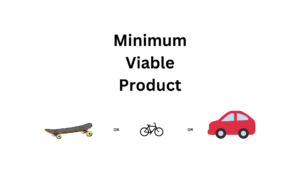In the symphony of software development, each role plays a critical part in creating harmony. But when the time comes for the sprint demo, it is the Product Manager who takes center stage, conducting the ensemble with a blend of tactical precision and strategic foresight. This pivotal moment offers more than just a showcase of the latest features; it is a rare opportunity to align visions, inspire teamwork, and solidify stakeholder trust. But what exactly is the role of a Product Manager during these demonstrations? Let’s peel back the curtain and explore.
Introduction: Setting the Stage for Success
Imagine the sprint demo as a theatre production. The stage is set, the actors are ready, and the audience is waiting with bated breath. In this scenario, the Product Manager is both director and lead actor, tasked with delivering a performance that conveys the product’s value, addresses stakeholder concerns, and sets the tone for future developments. But how does one prepare for such a multifaceted role? Let’s dive into the nuances of this responsibility and uncover the secrets to a standing ovation.
The Role Unveiled
Understanding the Script: The Product Vision
First and foremost, a Product Manager must deeply understand the product’s vision and how each sprint contributes to this long-term goal. This comprehension ensures that every feature and user story presented is not just a tick on a checklist but a step towards a grander vision.
- Crafting the Narrative: Connecting the dots between user stories, sprint goals, and the product roadmap.
- Prioritizing Features: Deciding which features to highlight in the demo based on their impact and relevance to the overall product strategy.
Engaging the Audience: Communication and Presentation Skills
A successful demo is as much about presentation as it is about content. A Product Manager must master the art of storytelling, transforming complex technical details into engaging, understandable narratives.
- Tailoring the Message: Adapting the demo to suit the audience, whether technical stakeholders, marketers, or sales teams.
- Clarity and Conciseness: Simplifying complex concepts without losing the essence of the value they deliver.
Directing the Ensemble: Team Coordination and Support
Behind the scenes, the Product Manager acts as a linchpin, ensuring that all team members are prepared, aligned, and supported for their parts in the demo.
- Pre-Demo Rehearsals: Conducting practice runs to iron out any technical or narrative kinks.
- Encouraging Collaboration: Fostering a supportive environment where feedback is welcomed and acted upon.
Gathering Intelligence: Feedback and Adaptation
The sprint demo also serves as a valuable source of feedback, providing insights that can shape the direction of product development.
- Active Listening: Paying close attention to stakeholder questions and concerns during the demo.
- Closing the Loop: Ensuring that feedback is not just collected but also analyzed and incorporated into future sprint planning.
My Personal Experience
As a Product Manager, I always loved to let the team own the demo to stakeholders. It was an opportunity for them to present the awesome work they do. While I always set the tone of the narrative, it was generally the members of the development team that did the hard work of presenting. This makes them feel like they have a ‘skin in the game’. It also gives the team members an opportunity to interact with key stakeholders within the organization (like the Head of operations or the Head of marketing etc.) and get early, first hand feedback about the Product / Feature / Capability etc.
As a Product leader, I have always encouraged Product Managers on my team to learn to ‘Trust’ their teams and have their back if things do not go as anticipated during the demo – e.g the Your staging environment may act funny and may not render the information you need on the screen, Your QA environment / database may be under maintenance, another team touched your test data and you may have to create new data on the fly. Remember ‘Murphy’s Law’ – “Anything that can go wrong will go wrong.”. So be prepared to protect your team and gracefully manage the situations with your stakeholders.
Conclusion: Beyond the Applause
As the curtains close on a successful sprint demo, the role of the Product Manager extends far beyond what is visible on stage. It involves meticulous preparation, strategic foresight, and a deep commitment to the product’s vision. More than just a showcase of features, the sprint demo is a strategic tool for building confidence, driving alignment, and fostering a culture of transparency and collaboration. So next time you witness the seamless execution of a sprint demo, remember the orchestration required to bring that performance to life, with the Product Manager as the conductor, ensuring every note resonates.
Takeaway Message: Whether you’re a seasoned Product Manager or aspiring to be one, remember that your role in the sprint demo is pivotal. Embrace it not just as a task, but as an opportunity to inspire, align, and propel the product towards its ultimate vision. The spotlight is on you; make every moment count.



